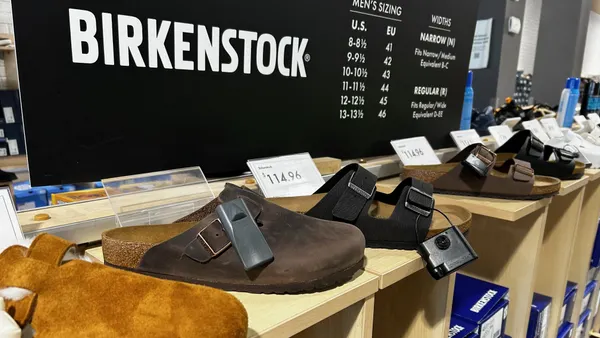Dive Brief:
-
Target has begun its planned brick-and-mortar revamp, and will re-grand open eight units in the Dallas market to celebrate recent renovations, according to the Dallas Morning News.
-
While the company didn’t outline the level of investments in Chicago, outlays for 28 existing-store remodels in the Dallas-Forth Worth area total $220 million, an average of $7 million per store and the most of any market, according to the Dallas Morning News. The new formats include removable walls and design elements that came out of customer research, according to the Dallas Morning News.
-
In July, Target will grand open nine small format stores, all in densely populated areas and many near universities to serve a younger customer base. This is the first round of three in Target's store-opening schedule and investment will be particularly heavy in Chicago and Dallas, including a 21,000 square-foot mini-store near the University of Chicago and plans for six other similarly tiny stores at Clark and Belmont, Lakeview Ashland, Downtown Evanston, Oak Park, Skokie and Rogers Park.
Dive Insight:
In March, Target executives unveiled a series of initiatives designed to reverse the big box retailer’s same-store sales declines, including an investment of more than $2 billion of capital in 2017 and more than $7 billion over the next three years. The company will use about $1 billion of operating profits this year to improve brick-and-mortar and digital operations.
The fruits of that investment are beginning to show. In addition to new and renovated stores, Target is installing a merchandise designer at all stores in order to ensure that layouts are maximizing its appeal.
CEO Brian Cornell at that time said that much of the investment will go to adding more than 100 small format urban stores over the next three years, as well as overhauling existing locations using aspects of the retailer’s LA25 concept store that have tested well (California will get four more Target stores in this round of openings). Stores are also being reconfigured to more efficiently serve as fulfillment hubs for online orders.
The company is also dedicating teams to introduce more than a dozen new brands over the next two years, with the research and design approach used for Target’s new Cat & Jack kids apparel and Pillowfort kids home decor brands. “We will touch more than $10 billion of current volume with the expectation that we will accelerate growth within our most differentiated and profitable categories,” Cornell said. For commodity products like food, consumables and household products, Target plans to compete better on price, executives said.
Cornell's massive overhaul of Target's brick-and-mortar and digital operations is a response to what he called "a seismic shift" in the retail industry. "All across the retail industry many of our competitors are aggressively rationalizing their assets," he told analysts. "They are closing stores, exiting markets. They are cutting costs just to keep their heads above water. We've not seen this number of distressed retailers since 2009 in the Great Recession."
From bookstores to electronics stores, many retailers have registered such seismic activity well before now, notes Matt Sargent, senior vice president of retail at Frank N. Magid Associates. "Target just took longer to feel the 'Amazon digital effect' than [Best Buy], due to the categories and customer base they play within," Sargent said in an email to Retail Dive. "Amazon initially went after books (successfully destroying physical book retailers), and then went onto CE and office supplies, and now are expanding into food and apparel."
Judging by efforts to double-down on its "cheap chic" merchandise differentiation, Target seems unwilling to cede much to Amazon or anyone when it comes to home decor and apparel, which outgoing CFO John Mulligan earlier this year said account for some $26 billion in sales. Although Target has been hit with criticism in recent months for its lackluster grocery offering, Cornell has reiterated that Target has no ambitions to serve as a traditional grocery retailer. Several analysts have questioned that, noting that grocery is a major driver of store traffic for retailers like Walmart. “Target continues to be plagued by a rather bland foray into grocery,” Joleen Wroten, senior retail strategist at retail intelligence firm 360pi, told Retail Dive in an email earlier this year. “Target reportedly earns one-fifth of their sales from grocery categories whereas Walmart generates over 50% of their sales from grocery in the U.S.”
It’s possible that Target is purposely attempting to stay above the fray, considering the expanding competition from no-frills German grocery chains that threaten to disrupt the grocery business and decimate the already thin margins of that category. In any case, Target's Cornell has declared the company has no intentions of morphing into a traditional grocery store, but these new stores and formats will reveal how it plans to better merchandise grocery in these critical urban markets.















